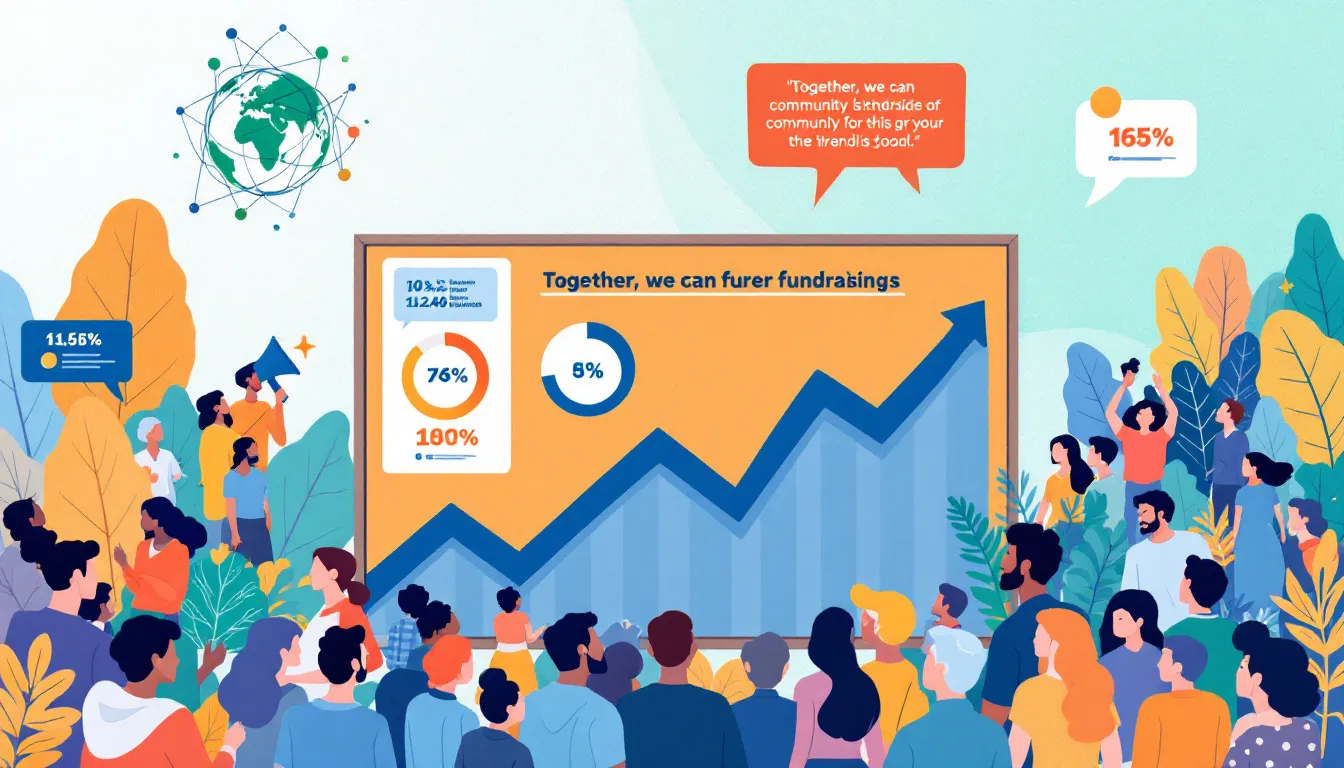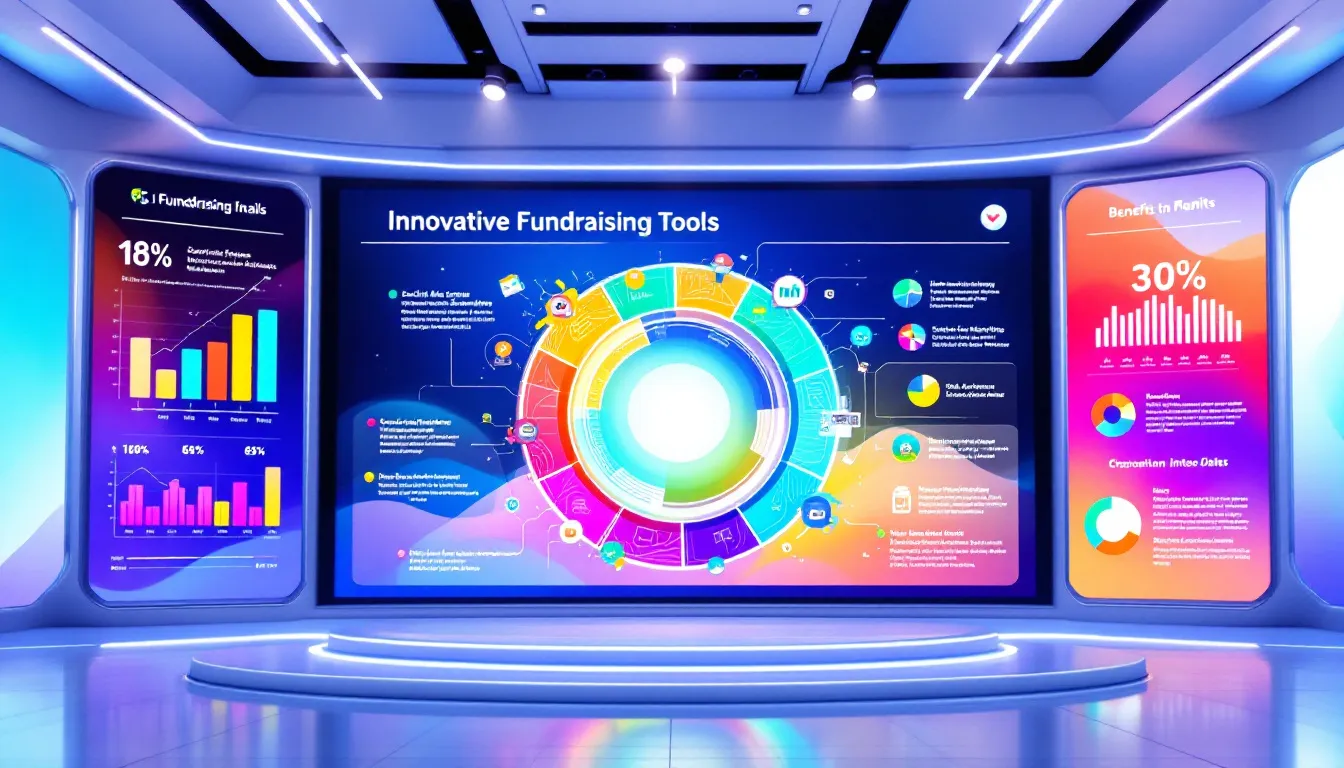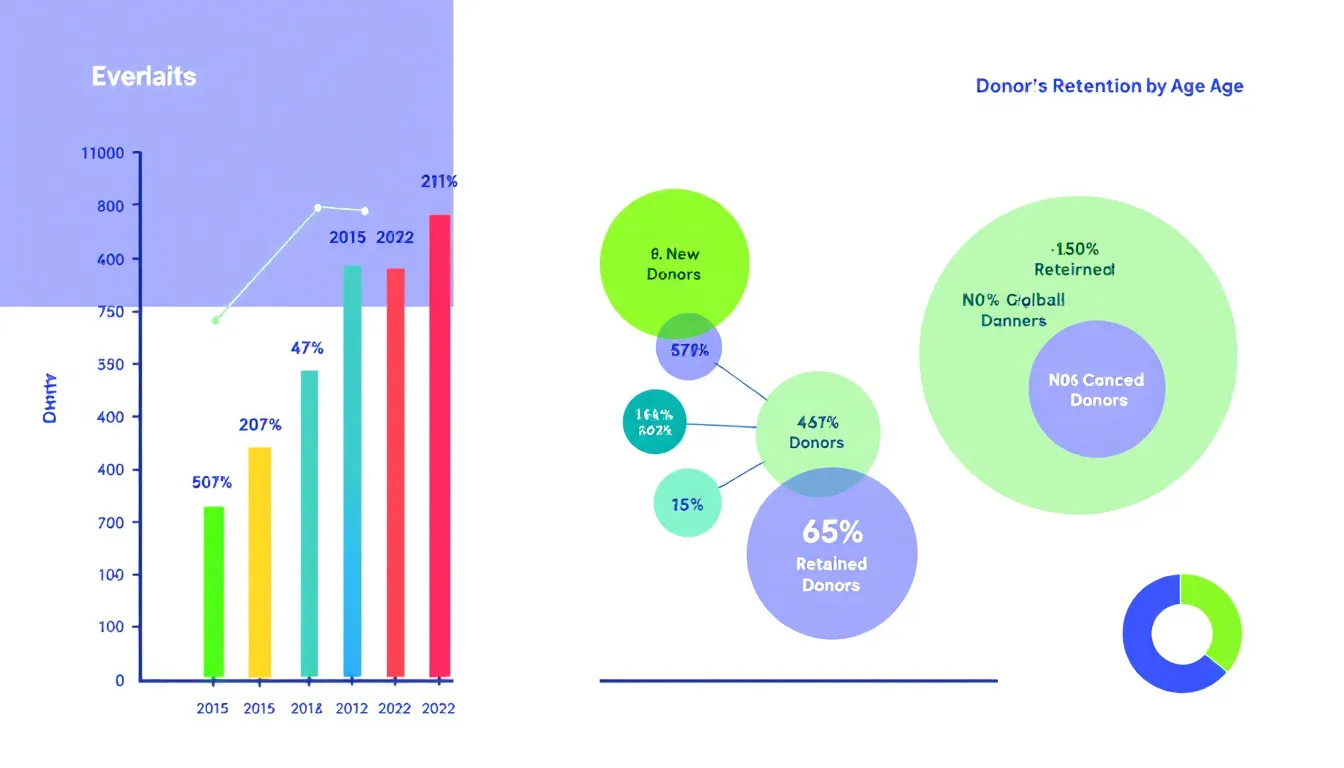Top Trends in Fundraising to Watch in 2025
In 2025, fundraising is evolving rapidly with emerging trends shaping how nonprofits engage donors and drive contributions. This article explores the latest trends in fundraising, helping you stay ahead with innovative strategies and tools. From personalized donor engagement to the rise of digital and mobile giving, we cover the key developments you need to know.
Key Takeaways
Personalize donor engagement using AI and data analytics to build stronger relationships and increase retention.
Embrace digital and mobile fundraising strategies to capture donations and reach younger, tech-savvy donors effectively.
Foster community engagement through local events and peer-to-peer fundraising to enhance loyalty and broaden outreach.
Personalized Donor Engagement
In 2025, personalized donor engagement is critical. Nonprofits that don’t adapt risk losing donor interest. Tailored communication builds meaningful connections and boosts retention rates. Leveraging data analytics and AI allows nonprofits to customize outreach to match individual preferences and behaviors, enhancing donor experiences.
Surprising and delighting donors with personalized donor outreach strengthens relationships. Personalized communication can lead to more donations and long-term support. Understanding donor behavior and preferences allows nonprofits to create engaging content that resonates and fosters strong relationships.
Leveraging Artificial Intelligence
Artificial intelligence (AI) is pivotal in nonprofit operations, analyzing donor data and enhancing personalization. AI and machine learning facilitate personalized communication and donor behavior analysis. Adopting AI tools keeps organizations at the forefront of technology, offering an edge in donor engagement.
AI enhances donor engagement by streamlining segmentation for more relevant marketing emails. Effective engagement includes communication based on interests, behaviors, and giving histories. Automating these processes with AI tools boosts engagement and improves fundraising efficiency.
About 90% of nonprofits are currently using AI. They are applying it for their marketing and engagement strategies.
Data-Driven Decision Making
Understanding donor behavior optimizes fundraising strategies for nonprofits. Refining donor preferences through data boosts engagement, retention, and acquisition via targeted campaigns. Data analytics enables better tracking, facilitating informed marketing efforts.
Campaign insights track essential metrics like revenue and conversion rates, guiding strategic decisions. Leveraging data analytics allows nonprofits to make informed, data-driven decisions, enhancing their fundraising efforts.
Segmentation Strategies
Segmentation in donor communications prevents irrelevant messaging and fosters meaningful connections. Nonprofits enhance relationships by creating targeted communications from segmented data. Personalized campaigns based on donor interests significantly boost engagement rates.
The cause must resonate with donors to influence their decision to give. Using segmentation strategies ensures communications are relevant and engaging, strengthening relationships and increasing donations.
Digital and Mobile Fundraising
Younger generations are driving a shift towards digital-first fundraising campaigns, compelling nonprofits to adapt their strategies. Increasingly motivated to engage in charitable giving, these generations make digital and mobile fundraising a priority, reflecting the current fundraising trend.
Hybrid fundraising models, combining virtual and in-person strategies, are becoming more prevalent. These models allow nonprofits to reach a broader audience and increase their success.
Mobile-First Donations
Nonprofits should develop mobile fundraising strategies to enhance donation capture. Payment methods like Apple Pay and Google Pay facilitate mobile giving, making it more convenient for donors.
While mobile donations are generally less effective than desktop ones, the average mobile donation pledge at fundraising events typically reaches $167.
Social Media Campaigns
Social media is crucial in a nonprofit’s marketing strategy, engaging supporters and raising money. Younger donors expect instant acknowledgment after contributing to stay engaged. Gen Z and Millennials, who prioritize social impact, diversity, and transparency, are highly influenced by social media.
Nonprofits should post regularly on social media to avoid being perceived as inactive and connect with influencers to enhance reach and credibility.
Online Giving Platforms
User-friendly online donation platforms improve donor conversion rates. They make it easier for donors to contribute and enhance the overall giving experience. A seamless and convenient donation process boosts online donations and helps achieve fundraising goals.
Community-Centric Fundraising
Community engagement is a key focus in 2025, driving stronger relationships with supporters and encouraging donations. Building long-term relationships with community members enhances fundraising efforts and fosters a sense of belonging.
Nonprofits prioritize local engagement through intimate events and supporter circles to foster lasting donor relationships.
Peer-to-Peer Fundraising
This model allows supporters to raise funds on behalf of nonprofits, broadening outreach and donor networks. User-friendly peer-to-peer websites make it easier for supporters to fundraise, enhancing efforts.
Corporate Partnerships
Matching gift programs offer significant opportunities for additional funding through corporate philanthropy. However, low awareness among donors is one of the largest hurdles nonprofits face.
Nonprofit organizations in the nonprofit sector are increasingly exploring partnerships with recognizable brands as a new avenue for strategic engagement.
Local Engagement Events
Hosting small-scale events can lead to deeper connections with community members and enhance donor loyalty. These connections help secure long-term support.
Hosting intimate local events helps nonprofits build strong relationships within the community.
Innovative Fundraising Tools
Innovative fundraising tools make it easier and more effective to achieve fundraising goals. AI tools, for instance, use data analytics to understand donor behavior and enhance engagement. Careful tracking of email campaigns is crucial for optimizing engagement and improving results.
Implementing robust membership management software can streamline the process of setting up automated donations.
CRM Systems
CRM or Membership Management Systems effectively manage donor data and build vibrant member communities. Integrating various donation methods into one repository taps into multiple income channels. A unified CRM system enhances outreach and engagement, making donor management more effective.
Virtual and Hybrid Events
Combining virtual and in-person elements in fundraising events broadens participation and increases success. Flexibility in online and hybrid methods is crucial for engaging a broader audience and meeting diverse preferences.
Virtual events can enhance engagement, though they require infrastructure and skills investment.
Automation Tools
Automation saves time, optimizes resources, and allows nonprofits to focus on critical services. It is effectively used for managing outreach to major and mass donor bases. Increasingly, nonprofits adopt email automation to enhance their efforts.
Streamlining routine tasks with automation tools lets organizations concentrate on strategic initiatives.
Emphasizing Transparency and Trust
Transparency about financial management is vital for gaining donor confidence. Effective communication about donation utilization encourages continued support. Maintaining open lines of communication allows nonprofits to address donor concerns promptly and strengthen relationships.
Impact Reporting
Donors increasingly value transparency and trust. Regularly sharing detailed reports on donation usage builds trust and encourages continued support from major donors.
Clear communication about impact and financial stewardship fosters donor trust.
Ethical Fundraising Practices
Transparency and trust are increasingly important to donors, requiring nonprofits to adopt ethical fundraising practices ensuring accountability. Regular impact reporting builds donor trust by providing clear insights into donation utilization and tangible community effects.
Open Communication Channels
Maintaining responsive communication with donors fosters strong relationships. Promptly addressing concerns through open communication strengthens relationships and encourages ongoing support.
Effective communication strategies enhance donor engagement and promote a culture of transparency.
Trends in Recurring Giving
Boosting donor retention is essential for nonprofits, both online and traditional. Online retention is slightly easier as donors warm to monthly recurring donations.
Membership and recurring donation strategies enhance participation in giving.
Subscription-Based Giving
Donors can commit to giving as little as $10 each month. Subscription-based giving allows donors to donate regularly, simplifying the process. These models streamline contributions, making it easier to give without reevaluating each time.
Membership Programs
Membership programs incentivize ongoing support from recurring donors by offering exclusive benefits. Subscription models simplify the giving process, enhancing retention through perceived value.
Automated Recurring Donations
Automated donation systems simplify the process, making it more convenient for regular contributions. Automating donations reduces friction and increases the likelihood of consistent contributions.
Automated donation setups improve retention by minimizing donor effort.
Summary
Summarize the key points discussed in the blog post, emphasizing the importance of adopting these trends for successful fundraising in 2025. Inspire readers with a call to action to implement these strategies and stay ahead of the curve in the evolving landscape of nonprofit fundraising.
Frequently Asked Questions
Why is personalized donor engagement important for nonprofits in 2025?
Personalized donor engagement is essential for nonprofits in 2025 because it fosters deeper connections and boosts donor retention. By leveraging data analytics and AI, organizations can customize their outreach, resulting in stronger relationships and increased contributions.
How can nonprofits leverage AI to enhance donor engagement?
Nonprofits can leverage AI to deliver personalized experiences by analyzing donor data for tailored communications and effective segmentation. Embracing these technologies will boost engagement and improve your fundraising outcomes!
What role does social media play in modern fundraising strategies?
Social media plays a vital role in modern fundraising strategies by engaging younger donors and expanding your reach. Embrace regular posting and collaborations with influencers to elevate your fundraising efforts and build stronger connections.
Why are transparency and trust important in nonprofit fundraising?
Transparency and trust are crucial for building donor confidence and securing ongoing support. By practicing ethical fundraising and communicating openly, nonprofits can strengthen their relationships with donors and enhance their integrity.
How do subscription-based giving models benefit nonprofits?
Subscription-based giving models significantly benefit nonprofits by providing a reliable income stream and improving donor retention, allowing supporters to contribute effortlessly and consistently. Embracing this approach can empower your organization to thrive and make a lasting impact!





